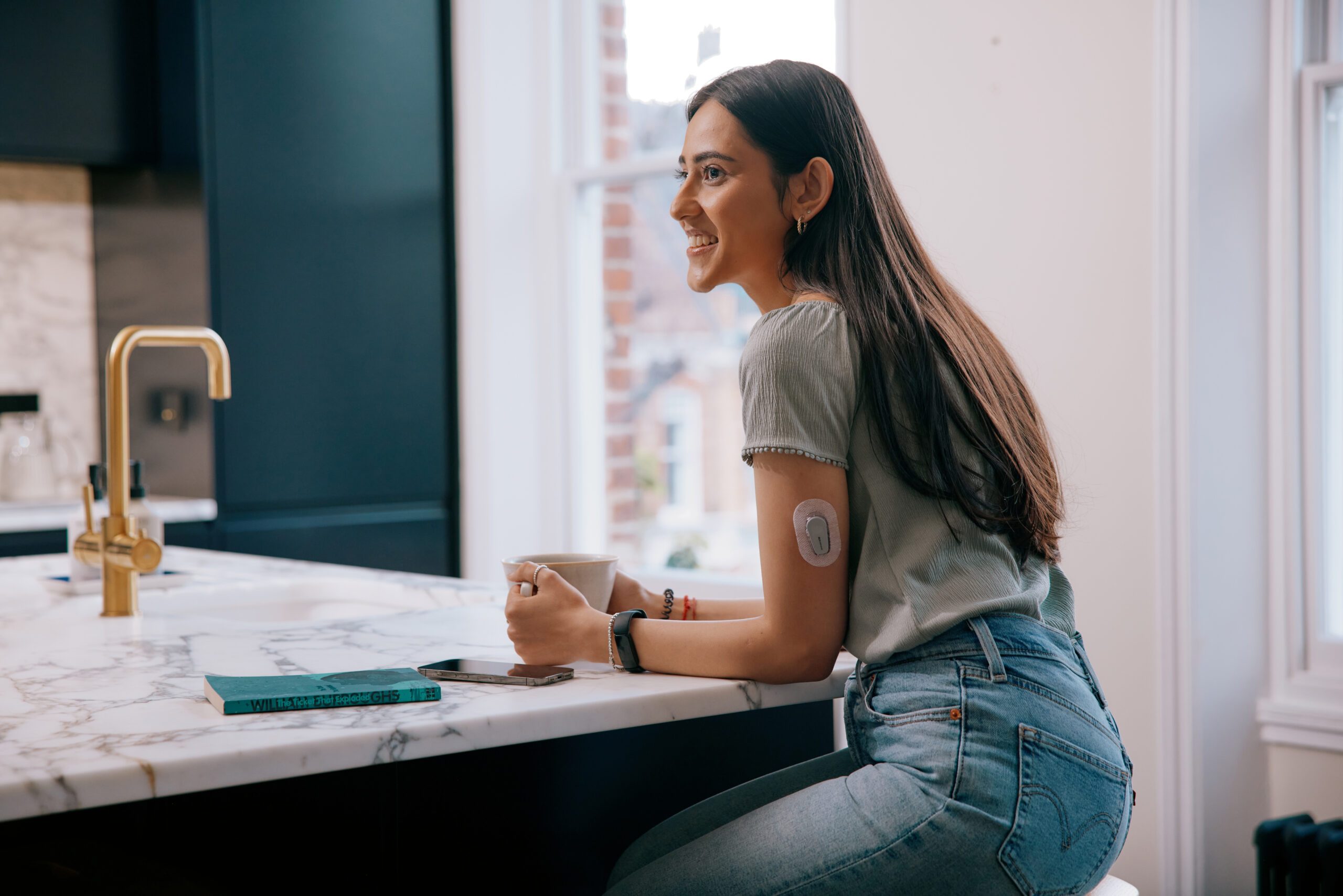
For people with diabetes treated with insulin, Dexcom rtCGM is associated with significant improvements over patients’ lifetimes and is likely to be cost-saving to the NHS
DexCom, the global leader in real-time continuous glucose monitoring (CGM) for people with diabetes, announced today the publication of a study “Cost-Effectiveness of a Real-Time Continuous Glucose Monitoring System Versus Self-Monitoring of Blood Glucose in People with Type 2 Diabetes on Insulin Therapy in the UK” in Diabetes Therapy1.
In the study, a long-term health economic analysis was determined using the IQVIA CORE Diabetes Model – which allows the calculation of long-term outcomes, based on the best data currently available – to establish the cost-effectiveness for funding Dexcom rtCGM technology versus testing with finger pricks. The analysis suggests that, compared to finger pricks, use of rtCGM results in significant improvements in baseline glycated haemoglobin (HbA1c), as well as reductions in long-term diabetes-related complications and emergency department visits1.
Key findings from the 2022 study include:
– Based on a willingness-to-pay threshold of £20,000 per quality-adjusted life year (QALY), the research found:
– 70.8% probability of rtCGM being cost-effective to the NHS compared to finger-pricking to test via a blood glucose meter and;
– 38.7% probability of rtCGM being cost-saving to the NHS as it can help decrease the risk of developing diabetes-related complications 1.
– rtCGM was associated with:
– 0.731 more quality-adjusted life years (QALYs), meaning the intervention can lengthen and/or improve patients’ lives and;
– An incremental cost-effectiveness ratio of £3,684 per QALY versus testing with finger pricks1.
– Based on the mean difference between groups after 12 months of follow-up, and the average HbA1c in the study being 8.27%, HbA1c was reduced by 0.56% in the group of rtCGM users1. The researchers monitored for severe hypoglycaemia – where sugar levels drop too low and third-party intervention is required – and hyperglycaemia – where sugar levels rise too high – or hospitalisation events, and the mean adjusted difference after 12 months follow-up was 0 events for people using rtCGM and 4 hypoglycaemia and 2.5 hyperglycaemia events for people using finger-pricking per 100 patient years1.
– The cost-effectiveness of Dexcom rtCGM was sensitive to capture the quality of benefits associated with reduced fear of hypoglycaemia and avoidance of testing with finger pricks, as well as the HbA1c benefit associated with rtCGM use1.
This analysis follows previous research that proved Dexcom technology to be cost-effective for people with type 1 diabetes in 2020 in the UK2.
“As healthcare technology – such as Dexcom’s rtCGM Systems – continue to evolve, policymakers have a tremendous opportunity to re-evaluate the standard of care offered to the diabetes community,” said Ben Byrne, country director of UK & Ireland at Dexcom. “Dexcom rtCGM has enormous value, not only in how it can improve quality of life for people managing diabetes, but also because it is likely to save the NHS money.”
The estimated yearly cost of diabetes to the NHS in 2022 is £10 billion2 – around 10% of its budget. Despite a wealth of clinical evidence and economic analysis showing that Dexcom rtCGM technology can increase quality-adjusted life expectancy and is likely to be cost saving, it’s not being offered as the standard of care for people with diabetes on intensive insulin therapy1-3.
“Our recent analysis clearly adds to the evidence that rtCGM is not only a highly cost-effective intervention for people with diabetes compared to finger pricking but is also likely to be cost saving,” said Byrne. “Given these findings, and with diabetes being so costly to healthcare providers in the UK, we need to take action and mandate more effective glucose monitoring consistently across the NHS and in the UK.”
METHODOLOGY
The study defined its methodology as per the following:
Long-term costs and clinical outcomes were estimated using the CORE Diabetes Model, with clinical input data sourced from a retrospective cohort study.5 Patients were assumed to have a baseline glycated hemoglobin (HbA1c) of 8.3%. Patients using rtCGM were assumed to have a 0.56% reduction in HbA1c based on the mean difference between groups after 12 months of follow-up. Reduced fingerstick testing when using rtCGM was associated with a quality of life (QoL) benefit. The analysis was performed over a lifetime time horizon from a National Health Service (NHS) perspective, including only direct costs from published data. Future costs and clinical outcomes were discounted at 3.5% per annum. Extensive sensitivity analyses were performed.
© Dexcom, Dexcom Clarity, Dexcom Follow, Dexcom One, Dexcom Share, and any related logos and design marks are either registered trademarks or trademarks of Dexcom, Inc. in the United States and/or other countries.
Citations
1 Isitt JJ, et al. Cost-Effectiveness of a Real-Time Continuous Glucose Monitoring System Versus Self-Monitoring of Blood Glucose in People with Type 2 Diabetes on Insulin Therapy in the UK. Diabetes Ther. 2020;13(11-12):1875–1890.
2 Roze S, et al. Long-term Cost-Effectiveness of Dexcom G6 Real-time Continuous Glucose Monitoring Versus Self-Monitoring of Blood Glucose in Patients With Type 1 Diabetes in the U.K. Diabetes Care. 2020;43(10):2411-2417.
3 Roze S, et al. Long-term cost-effectiveness the Dexcom G6 real-time continuous glucose monitoring system compared with self-monitoring of blood glucose in people with type 1 diabetes in France. Diabetes Ther. 2021;12(1):235-246.
4 https://www.england.nhs.uk/2022/03/nhs-prevention-programme-cuts-chances-of-type-2-diabetes-for-thousands/
5 Karter AJ, et al. Association of Real-time Continuous Glucose Monitoring With Glycemic Control and Acute Metabolic Events Among Patients With Insulin-Treated Diabetes. JAMA. 2021;325(22):2273-2284.



